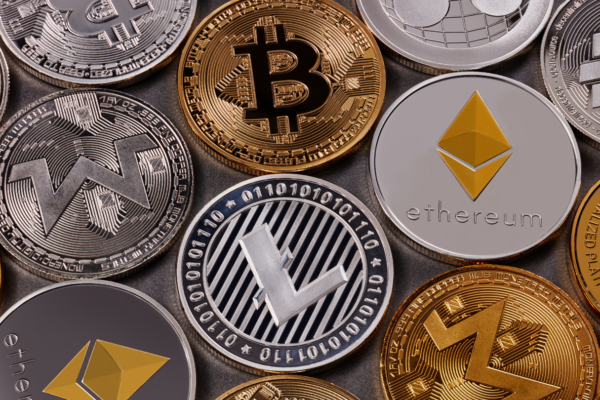What is Polkadot (DOT)? Is it halal?

IW
IFG Staff Writers
10 min read
Last updated on:
Polkadot is a blockchain platform that connects multiple purpose-built blockchains into a unified and scalable network.
Its vision is to power a decentralised internet which has come to be known as ‘Web3’.
Polkadot was founded on the belief that there will be no one single winner in the cryptocurrency space. Instead, there will be multiple successful projects. They aim to be the network that connects all the various chains.
As a blockchain platform with no inherent impermissible activities, we believe Polkadot is halal. However, care needs to be taken to ensure that Polkadot doesn’t overwhelmingly become associated with haram activities. Read on for a much deeper dive into Polkadot itself and the Islamic views on it.
What is Polkadot?
Polkadot is the flagship project of the Web3 Foundation, whose mission is to ‘facilitate an open-source, fully functional and user-friendly decentralised web’. It was co-founded by Ethereum co-founder Gavin Wood after he became disillusioned with the development of Ethereum.
Gavin Wood is well regarded in the crypto industry, having invented Solidity, the primary programming language for Ethereum. He also coined the phrase ‘Web3’ which gained mainstream attention in 2021.
Web3 is a vision of the next version of the internet which is based on public blockchains that hand back control to the people, instead of big centralised entities such as Google or Facebook.
Polkadot’s main feature is that it is interoperable with all types of blockchains, allowing them all to send data to each other. These separate blockchains can be united under Polkadot’s main network. Polkadot’s native token, DOT, is used to govern the protocol. Through these chains, Polkadot facilitates the creation of new blockchains and smart contracts.
How does Polkadot work technically?
Polkadot’s architecture is more complicated than most blockchains. Let’s break down the key components that you need to be aware of.
The Relay Chain
The Relay Chain is Polkadot’s main blockchain. It’s responsible for:
- achieving consensus on transactions
- maintaining the security of the network
- cross-chain interoperability (connecting to other blockchains)
The network is connected to new blockchains through the use of parachains and bridges which are connected to the relay chain.
Parachains
Parachains are custom and project-specific blockchains that are connected to the relay chain. This allows them to share in and benefit from the security and interoperability of Polkadot.
Parachains can have various use cases, tokens and governance structures.
At the moment, there are up to 100 parachain slots available and these are in high demand. Projects that want to join the Polkadot ecosystem can do so by participating in parachain slot auctions.
Auctions are won by the projects that have bid the highest amount of DOT. This DOT is bonded with the parachain slot and is returned either for unsuccessful bids or at the end of the lease period for successful projects. As such, the only cost for the auction is the opportunity cost of having your DOT locked up until you can access it.
Parachain bidders can privately fund their auction bids or open it up to public investors who can participate via a crowdloan. A crowdloan allows any investor to support a bid by locking DOT in support of their campaign. The competing bid can even choose to reward investors by offering tokens in return if they are successful.
A parachain slot can only be leased for up to 2 years at which point they go back up for auction. Current parachains on the Polkadot network include the likes of Astar (smart contracts), Efinity (NFTs and gaming) and Acala (DeFi).
Bridges
Not all blockchains can easily connect to the relay chain as a parachain. These external blockchains (which include Bitcoin and Ethereum) need a bridge to connect to the relay chain.
NPoS
Polkadot uses a nominated proof of stake (NPoS) consensus mechanism to approve transactions and add them to the blockchain. This is a variant of proof of stake (PoS). In PoS, instead of miners certifying transactions you have ‘validators’.
These validators are chosen at random based on how much of the network’s token they have locked up (i.e. their stake). This system is popular as it requires a lot less energy than POW although POW proponents argue that their method is more secure.
NPoS introduces the concept of nominators. Nominators are responsible for selecting validators. They do this by staking (locking their tokens up to earn a reward) tokens with validators.
If they nominate a bad validator, they can lose their stake. Otherwise, they receive some of the validators’ rewards. This incentivises nominators to nominate good validators and thus secure the network.
Nested relay chains
Network scalability is a huge challenge in the cryptocurrency space. Polkadot’s answer to that challenge is to introduce nested relay chains. This is a new feature being developed by the Polkadot team. It works by increasing the number of parachains that can be added to the network, allowing the network to scale with demand.
Upgradeability
Upgrading a blockchain can be a long process. Traditionally, to upgrade a blockchain, a hard fork would have to be carried out. A hard fork is when a blockchain splits into two competing versions, one with the original software and one with the new software. To successfully upgrade, you need the users and developers of a project to switch to the new blockchain.
Polkadot enables blockchains to upgrade themselves without having to endure this hard fork process. Instead, Polkadot stakeholders can propose upgrades which are then voted on by token holders. If successful, the upgrade is autonomously adopted by the network without the need for human intervention.
What are the use cases of Polkadot?
Polkadot’s primary use case is to enable interoperability between blockchains. All types of blockchain can talk to each other under the banner of Polkadot helping to accelerate innovation and unlock new value.
Through its parachains, Polkadot can give rise to many other use cases. Here are a couple of key examples:
- Decentralized Finance (DeFi). DeFi is essentially finance conducted without a central authority (banks, governments etc). Rather, it is an internet-based peer-to-peer financial system based on blockchain technology. For more on DeFi, check out our deep dive here.
- Non-Fungible Tokens (NFTs). NFTs are digital tokens that can represent a unique asset, allowing them to be traded, supporting digital artwork marketplaces to digital ticketing. For more on NFTs, check out Ibrahim’s video here.
Are people using Polkadot right now?
Tracking Polkadot’s usage statistics is tricky. As many users interact with Polkadot through its parachains making it difficult to get an aggregate view of all transactions.
On the main network, there have been an average of ~ 7k daily signed transactions on the Polkadot network over the past week. To get a more accurate picture of the overall activity, you need to look at the parachains. For example, parachains such as Moonbeam and Astar have daily transaction volumes of 30k and 210k.
When evaluating DeFi platforms, a useful metric to use is Total Value Locked (TVL). The TVL represents the total value locked in a network’s DeFi protocols and indicates how popular a network is.
On Defi Llama, Polkadot’s TVL is listed as just $250k. However, they have recorded its parachains as having a combined TVL of $550m, except for Acala (another parachain) which has self-reported a TVL of $450m. This gives Polkadot a combined TVL of at least $1bn which would put it in Defi Llama’s top 10 chains by TVL. However, it is still dwarfed by Ethereum’s TVL of over $50bn, which for now is still the undisputed king of the DeFi space.
What are the strengths and weaknesses of Polkadot?
Strengths
- Has a reputable and talented team behind the project
- Focus on interoperability is helping it to create an impressive ecosystem
- Nested relay chains would allow it to scale, solving a big challenge in the industry
- Widely available on crypto exchanges
- Environmentally friendly
- Parachain slot auctions require DOT tokens to be locked up which could be positive for the price action
Weaknesses
- Faces direct competition from the likes of Cosmos
- Competes with Solana and Near Protocol for developers but has less funding than both. Their success depends on having enough developers to continue building so this is crucial
- Polkadot has some way to go to catch up to the runaway leader Ethereum which is aiming to scale through different methods
- Polkadot has high price volatility and thus is a high-risk investment
Is Polkadot a good inevstment?
Polkadot (DOT) is currently the 11th largest cryptocurrency with a market capitalization of $10bn. DOT can be bought from most exchanges including Coinbase and Binance. It reached a peak of $55 in November 2021 and is currently trading around $8 at the time of writing.
Polkadot has a unique position in the crypto space. Its focus on interoperability gives it a genuine competitive advantage. It has built a network that is attracting different projects who are all skilled in different areas of cryptocurrency to form one super ecosystem.
You can think of Polkadot as trying to become the one-stop-shop for all things crypto. Its token DOT is central to this interoperability with its use being required to secure parachain slots, pay fees and also vote on governance issues. This could lead to positive price movements.
However, there is still a long way to go and there is a lot of competition to face. Some are direct competitors such as Cosmos and then you have indirect competitors such as Ethereum which have decided to take different routes to success.
Ethereum is indisputably the key leader in the smart contract space and is in the middle of a planned migration. If this goes well, it could further entrench its position at the top.
As the industry is still new, it’s hard to definitively say which projects will come out on top. Therefore, it could be prudent to be conservative and refrain from over-committing to any single project. Instead, you should spread your investments across multiple projects.
Alternatives to Polkadot
Ethereum (ETH)
Ethereum is the second-largest cryptocurrency and is the original smart contract platform. Polkadot is trying to disrupt Ethereum but Ethereum has a big lead over it, in terms of active developers and platform usage. Ethereum is also planning a migration from the proof of work consensus system to a proof of stake system. This would help it bolster its eco-friendly credentials and result in cheaper and quicker transactions. However, this migration has already been delayed many times and carries plenty of execution risk. For more on Ethereum, read our deep dive here.
Solana (SOL)
Solana is an Ethereum competitor that was one of the biggest success stories of the recent bull run. Its price sensationally went from $0.5 in May 2020 to $260 in Nov 2021. Its price has now settled at $37 in the current market downturn but it is still the 9th largest cryptocurrency. Solana is known for its lightning-fast processing speeds and low transaction costs. However, it has struggled with network outages on seven separate occasions over the past year showing that there is still work to be done.
Cosmos (ATOM)
Cosmos is arguably Polkadot’s direct competition. It also had a strong focus on interoperability however it achieves this by different means. It is the 30th largest cryptocurrency with a market capitalization of 2.5bn so it is considerably smaller for now.
Is Polkadot halal?
When it comes to cryptocurrency in general, our view is that investing in crypto is halal as long as the project itself is halal. We see cryptocurrency as a type of digital asset (with the potential for some to become fully-fledged currencies).
We don’t find there to be anything problematic from an Islamic perspective about blockchain technology, and cryptocurrency which is a use of blockchain and seeking to profit from it. For more on our approach to crypto, check out this article.
You want to avoid projects where:
- the technology underpinning the project is intrinsically linked to a haram transaction (e.g. interest-based lending)
- the ecosystem that they are creating is so inextricably tied up with illicit/immoral activities that it would be inappropriate to support such an ecosystem (e.g. a project geared solely towards gambling)
The case for yes and why
We consider Polkadot to be halal. The DOT token is simply an agnostic token that allows you to transact within the Polkadot ecosystem. However, the idea is that lots of external third parties can plug in and use this ecosystem to transact. Fundamentally, the more people use this ecosystem, the greater the liquidity and demand for the DOT token.
The case for no and why
If you follow the opinion that crypto isn’t permissible, then Polkadot by extension would also not be permissible.
Otherwise, one point to bear in mind from a sharia perspective is if one ecosystem becomes overwhelmingly linked with a haram industry then there may be an issue. However, right now it’s all too early to make such a judgement call.
Conclusion
In summary, Polkadot has an exciting vision of becoming a one-stop-shop for all things crypto. Its focus on interoperability is allowing it to build a compelling ecosystem. Its parachain slot auctions have the potential to capture the attention of investors and boost its price.
However, it is still early days and Ethereum is still the undisputed leader of the smart contract space, and it’ll take some effort to dislodge it.
We are satisfied that it is indeed a halal asset and thus permissible for Muslim investors to buy.
Comments (0)
Related Articles
View all
Is Bitcoin and Crypto Haram? The Ultimate Guide for Muslim Investors
14 July 2025 9 min read




Leave a Reply